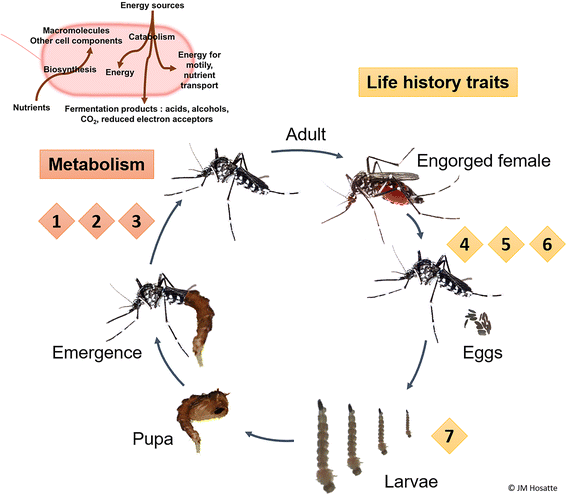The mosquito holobiont: fresh insight into mosquito-microbiota interactions
- PMID: 29554951
- PMCID: PMC5859429
- DOI: 10.1186/s40168-018-0435-2
The mosquito holobiont: fresh insight into mosquito-microbiota interactions
Abstract
The holobiont concept was first developed for coral ecosystems but has been extended to multiple organisms, including plants and other animals. Studies on insect-associated microbial communities have produced strong evidence that symbiotic bacteria play a major role in host biology. However, the understanding of these symbiotic relationships has mainly been limited to phytophagous insects, while the role of host-associated microbiota in haematophagous insect vectors remains largely unexplored. Mosquitoes are a major global public health concern, with a concomitant increase in people at risk of infection. The global emergence and re-emergence of mosquito-borne diseases has led many researchers to study both the mosquito host and its associated microbiota. Although most of these studies have been descriptive, they have led to a broad description of the bacterial communities hosted by mosquito populations. This review describes key advances and progress in the field of the mosquito microbiota research while also encompassing other microbes and the environmental factors driving their composition and diversity. The discussion includes recent findings on the microbiota functional roles and underlines their interactions with the host biology and pathogen transmission. Insight into the ecology of multipartite interactions, we consider that conferring the term holobiont to the mosquito and its microbiota is useful to get a comprehensive understanding of the vector pathosystem functioning so as to be able to develop innovative and efficient novel vector control strategies.
Keywords: Adaptation; Mosquito; Multiple interactions; Pan-microbiota; Pathogen transmission; Symbiosis.
Conflict of interest statement
Ethics approval and consent to participate
Not applicable.
Competing interests
The authors declare that they have no competing interests.
Publisher’s Note
Springer Nature remains neutral with regard to jurisdictional claims in published maps and institutional affiliations.
Figures


References
-
- Rosenberg E, Koren O, Reshef L, Efrony R, Zilber-Rosenberg I. The role of microorganisms in coral health, disease and evolution. Nat Rev Microbiol. 2007;5:355–362. - PubMed
-
- Caragata EP, Dutra HLC, Moreira LA. Exploiting intimate relationships: controlling mosquito-transmitted disease with Wolbachia. Trends Parasitol. 2016;32:207–218. - PubMed
Publication types
MeSH terms
LinkOut - more resources
Full Text Sources
Other Literature Sources
Medical

